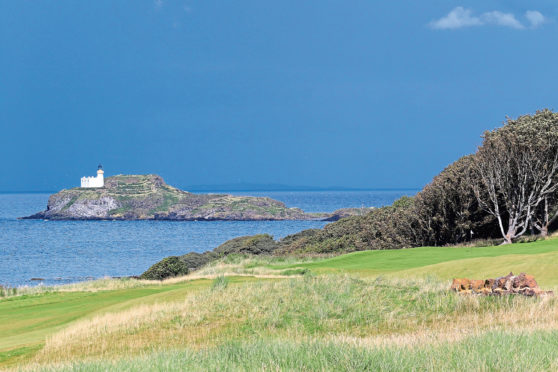The Aberdeen Standard Investments Scottish Open is a cornerstone of the European Tour, and to mix metaphors, also a crown jewel.
The only real and consistent measurement we have for the relative wealth of any tournament is the Strength of Field (SoF) rating given in the Official World Golf Rankings, and it illustrates the Scottish Open’s importance.
Last year, the Scottish Open was ranked second in SoF of the Tour’s non-major, non-WGC events, behind the season-ending DP World Championship. In 2017, it was ranked the first.
Of course, where it sits in the tour schedule has a whole lot to do with this. The Scottish Open moved to the week directly preceding the Open Championship in 1987 and has held that spot, unbroken, for 34 editions now. The last eight have been under the banner of Scotland’s foremost golf philanthropists with the Scottish Government an enthusiastic partner.
This is the penultimate year of the long-term deal signed between the Tour, ASI and the Scottish Government. There’s no word of this significant shop window to the world for Scottish golf ending, but the event does seem at something of a crossroads.
This year’s will be hosted for the first time at The Renaissance, just over the wall from Muirfield between Gullane and Direlton in East Lothian.
It’s the brainchild of Jerry Sarvadi, a Houston-based oilman, a private members’ club with a course designed by Tom Doak. It took some nerve to build a golf course in the land between the celebrated Muirfield and North Berwick but Doak, not shy of severely critiquing other people’s work in his renowned Confidential Guides to the world’s golf courses, was up to the task.
But while it’s a fine course, it’s not a links course. It’s close to the Firth of Forth – closer than Muirfield – the winds are as capricious as you’d imagine, and in places it looks just like a links, but underfoot? Definitely not.
This shouldn’t get us going all sacrilegious, of course. Castle Stuart, many times a Scottish Open venue, isn’t really a links either. Dundonald, the venue in 2017, just about passes muster, but not for some uber-purists.
But the script for the Scottish Open in recent times, since it vacated Loch Lomond in 2010, was that it has to be on a links course.
It was part of the so-called Links Swing of the tour, which took in Ireland and even France, where the efforts to stretch definition to including Le Golf National as “links” went beyond the ridiculous.
Now that swing is no more; the Open de France has moved to September – and the Irish is set to follow it, frustrated at the Scottish Open being entrenched in the pre-Open slot and not having enough big names choosing to play.
Meanwhile, the Scottish Open seems to have run out of links, as odd as that may sound.
The Renaissance – which appears likely to host the event in 2020 as well – is not really links. Dundonald wasn’t a big success. Spectator numbers (and big name presence) were low up at Castle Stuart, sadly.
The response of the North East public to the one venture to Royal Aberdeen was distinctly underwhelming (they might want to go back and try again now that the Granite City has a serviceable traffic system, but that’s just a personal observation).
The Open venues, by diktat of the R&A, are out. Gullane has done two and has served its time. Kingsbarns won’t give up their lucrative tee times for three to four weeks without a hefty price and in any case, it too isn’t entirely a proper traditional links, although it does the best impression of any of the new kind.
Gems like North Berwick, Cruden Bay, Western Gailes, Montrose, Royal Dornoch and many more are too tight, or too isolated, or don’t have enough infrastructure.
There’s Trump International, of course. Yeah, not happening, probably ever.
Away from the links and faux-links, there are two outstanding and tested venues – Loch Lomond and Gleneagles. The crowds at both those inland hosts have been much higher than at any of the links venues.
Both seem to want to get back in the game of hosting professional golf events. Loch Lomond underwent a restructuring after the Scottish Open left but only a couple of years ago were indicating that they might be amenable to opening the gates again. The course is even better than it was when the Scottish went every year.
Gleneagles has the Solheim Cup this year, but beyond that it’s open for business. Furthermore, the Perthshire Palace has two (three, really) great courses and could host the men’s and women’s Scottish Opens in the same week, an idea that is gaining ground on the Tours and with sponsors, and has the support of Catriona Matthew.
Of course, a big part of the reason for going links-only in 2010 was that top players wouldn’t come and play inland the week before an Open.
I always thought that was overstated. Loch Lomond got good fields every year, and most of the elite names are just looking for a quiet, luxurious week’s prep.
And with Castle Stuart, Dundonald and now The Renaissance, it’s not as if they’ve been getting a complete links experience anyway.
The Scottish Open is big and important enough to thrive on its own terms. Going inland wouldn’t spoil that, it might even enhance it.
